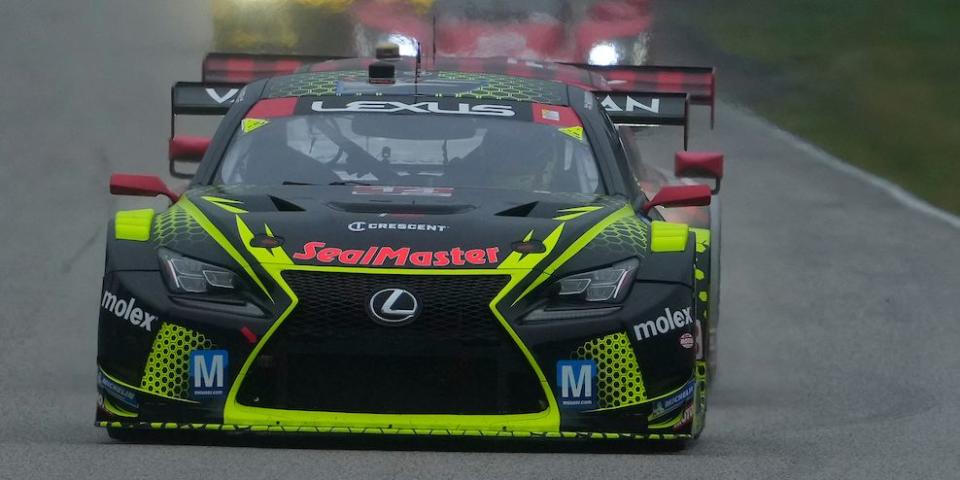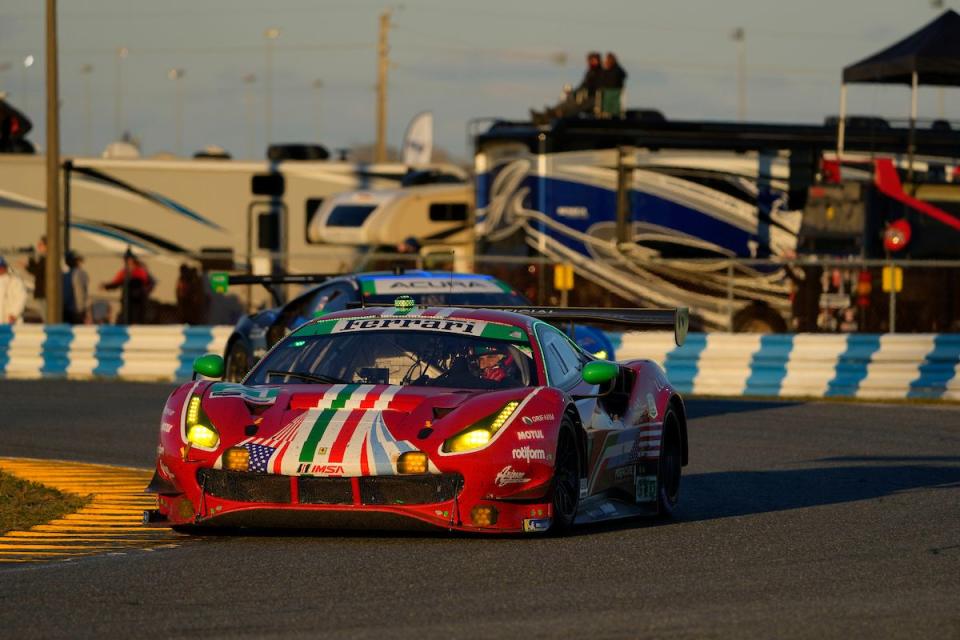2022 Petit Le Mans Entry List: IMSA President Optimistic GTD Pro Class Can Survive

IMSA’s GTD Pro class raced this season with just five regular entries on the grid; two more are joining the grid at this weekend's Petit Le Mans.
It remains to be seen how many GTD Pro cars are on the grid next year for the class distinguished by professional driver lineups.
IMSA president Jon Doonan is confident that, “There are still specific manufacturers who want a pro driver (paired with a) pro driver opportunity."
In a world where GT3 class cars with paying amateur drivers have become the route for manufacturers and teams to generate income, will IMSA’s GTD Pro class continue to survive after a season of just five regular entries on the grid?
The list of GTD Pro entries at this weekend’s Motul Petit Le Mans features seven cars from seven different manufacturers (Chevrolet, Porsche, Lexus, Aston Martin, BMW, Ferrari, Mercedes AMG), which the high-water mark since the Sebring 12-hour in March. By comparison, the GTD class that features amateur drivers has 16 cars in the field for Petit.
It remains to be seen how many GTD Pro cars are on the grid next year for the class distinguished by professional driver lineups.

John Doonan, president of IMSA, is optimistic about IMSA’s choice to retain the remnants of the GTLM class with pro drivers behind the wheel of the GT3 cars that are closer than ever to high-performance street machines. “There are still specific manufacturers who want a pro driver (paired with a) pro driver opportunity,” he said. “There are obviously teams that want a pro and pro (driver) opportunity.”
The GTLM category in the American Le Mans Series launched at the first Petit Le Mans in 1998 at the Michelin Raceway Road Atlanta was a fully professional class and a bellwether for Don Panoz’s series in terms of car counts and fan interest, because it invariably included cars and teams that raced at Le Mans as well as cutting edge machinery. The category survived the merger with Grand-Am starting in 2014 until it became designated GTD Pro this year and adopted the now universal GT3 car regulations.
But at a time of a convergence on the hybrid prototype front with the respective GTP and Hypercar classes, the two “sides” of the Atlantic are diverging on how to run the GT category. Le Mans officials have bailed out by restricting GT3 entrants to at least one amateur-status driver next year and dropping it's pro class entirely.
Doonan cites the interest in the American market by manufacturers in Europe and America as the foundation for IMSA’s GT programs. But how many will continue to “double dip” their branding exercise by selling customer GT3 cars to teams in the entry level GTD class as well as taking some of that money to then fund factory-backed teams with professional drivers? Will fans even recognize the distinction of GT3 teams with an all-pro driving lineup?
Next season will look like this year in GTD Pro, said Doonan. “I think we’re headed for a similar car count next year based on the conversations we’re having,” he said.
Here's the outlook for the 2023 GTD Pro class:
Chevrolet, Porsche, Aston Martin, Lexus

In addition to GM’s Corvette Racing, Porsche, whose partnership with Pfaff Motorsport has resulted in this year’s GTD Pro championship, are committed. Aston Martin and Lexus are expected to fund their respective Heart of Racing and Vasser Sullivan Racing entries in GTD Pro. Consider these four in for 2023.
The question marks:
BMW

With BMW’s RLL team moving up to the new GTP class for hybrid prototypes, it’s not clear if the German manufacturer, which also plans to compete at Le Mans starting in 2024 with the GTP car, will continue to fund a GT3 Pro team. If BMW wants to continue in the pro class, current GTD entrants Turner Motorsports or Paul Miller Racing can step up. It’s all a question of how the annual cost of fielding a car—roughly $3 million—is shared by a manufacturer and a team, which often rely on private investors to purchase a car.
Ferrari

Whither Ferrari? Risi Competizione will represent one of the seven manufacturers at the Petit with a 488 GT3 entry competing for the GTD Pro victory and the Michelin Endurance Cup after three previous entries in the long-distance events. But team owner Giuseppe Risi has sold his Ferrari dealerships in Houston and his future racing plans are unclear.
AF Corse, which competes in various GT3 categories around the world with Ferraris, intends to field the new 296 GT3 in the Rolex 24 at Daytona next year in GTD and possibly a full IMSA season, but is not expected to field a GTD Pro entry.
Mercedes AMG

After bouncing between the two classes with a Porsche 911 GT3 R and a Mercedes AMG this year, WeatherTech Racing will compete at the Petit Le Mans as a GT3 Pro entry with the Mercedes AMG and a driving lineup including two platinum-level wheel men. David MacNeil, owner of WeatherTech—the title sponsor for IMSA’s premier series—funds the Proton Competition team of Germany, which prepares and fields his Mercedes AMG ars.
Success at the Petit, where WeatherTech Racing won last year, is regarded as a potential opportunity for Proton to persuade the factory to step up to the pro category. MacNeil and his son Cooper, who usually drives for the team and is a three-time class winner at the Petit, will not be at Michelin Raceway Road Atlanta, presumably due to company commitments.

 Yahoo Autos
Yahoo Autos 